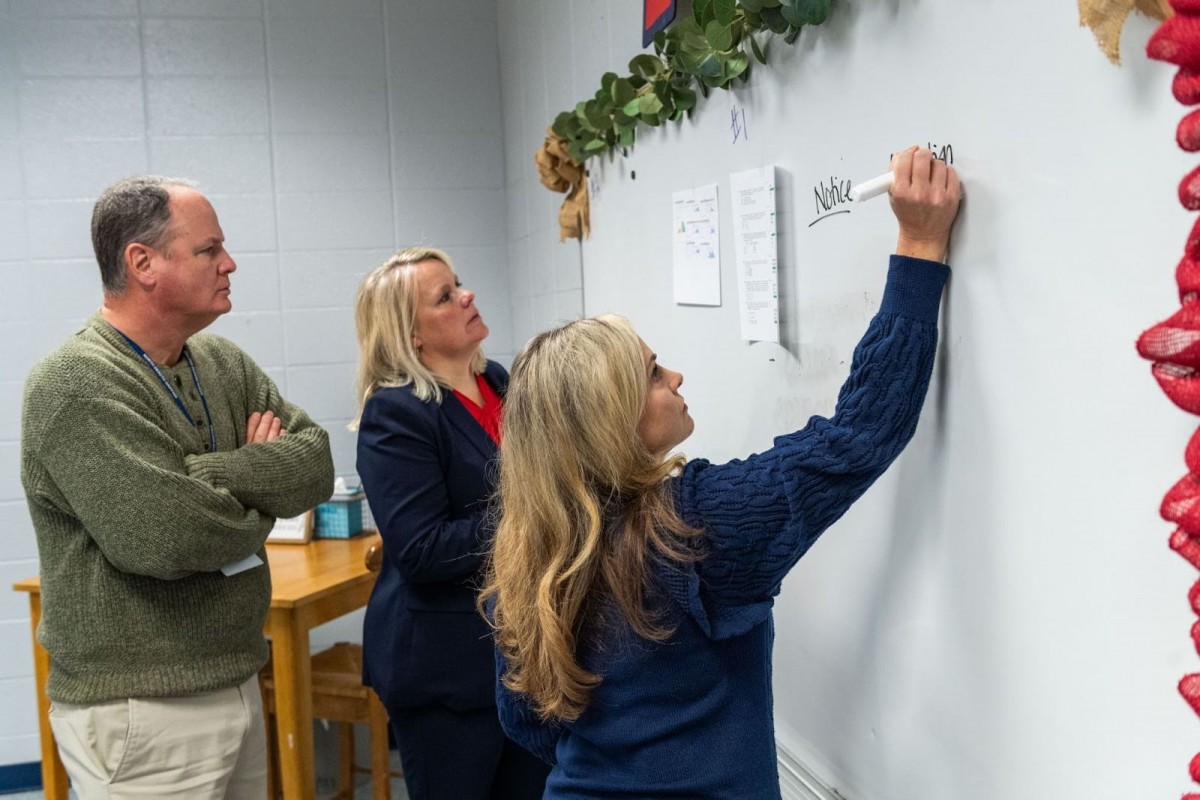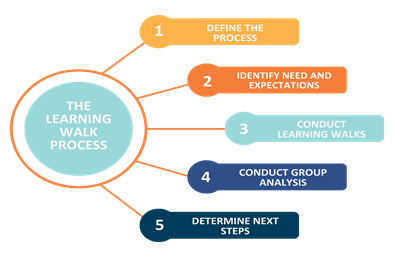How Schools Put Their Best Foot Forward With NIET’s Learning Walks
September 4, 2024

Effective teaching takes diligent preparation before the bell. However, what happens between the bells offers leaders a critical window into the instructional practices that are working well and those that could be improved. Seeing a classroom in action grounds leaders in their analysis of student learning and feedback to teachers. With the correct structure, these learning walks can pave progress for miles. These walks provide insights into the effective use of data and observation, help to build a common language among leadership team members, and most importantly, act as a lever for larger conversations that drive school and district-wide success.
With careful planning and preparation, learning walks can be optimized. Leadership members can use these key opportunities to provide detailed, specific, and actionable feedback that helps teachers improve their practices. At NIET, we align these walks with five steps for success, preparing teams from start to finish to make the most out of their time and transforming the learning walk ‘window’ of observation into a door that opens to larger, necessary conversations propelling success.

Learning Walk Process Graphic, designed to accompany NIET Learning Walk trainings. Est. 2023.
Step 1: Define the Process
The learning walk process is diagnostic and supports the systems NIET helps school districts implement. This process allows leaders to build knowledge of instructional excellence while in the classroom. Before stepping into classrooms to observe instructional practice in action, leadership teams will be best prepared if they enter their walk with a defined purpose for the classroom visit.
Before the learning walk, school leaders should define the purpose of the process and reflect on the following questions to prepare:
- What questions will we use to guide our learning?
- What is the intent of the learning walk?
- Determine which classrooms will be observed.
- Develop a schedule indicating times for pre-work (define learning expectations and establish purpose), classroom observations, and debrief/support plans.
- Gather copies of curriculum/lesson plans.
- Communicate the purpose of the learning walk to the teachers to be observed.
Identifying a focus area using these guiding questions for a school’s learning walk ensures school and district leaders are focused on the same areas during a visit and will come away with cohesive feedback to discuss.
Step 2: Identify Needs and Expectations
Based on the defined process, leadership teams next identify what they may expect to see in the classrooms. By taking time to identify needs, teams define the expectations of student work and instructional practices that should be elevated in the lesson to ensure all students are successful. This step, which occurs before the walk, is informed through analysis of assessments, lesson curriculum, and instructional rubrics and aligns the focus of observation among instructional leadership teams (ILTs).
When ILTs set expectations and identify needs before a learning walk, it guides them in being more intentional in observing a classroom. Additionally, it creates a common framework for defining concrete actions that improve student outcomes. Now, with a defined process and time to analyze necessary resources, the team is ready to take their walk.
Step 3: Conducting the Learning Walk
Many NIET specialists join our partners in their walks to support their observations based on their pre-work. NIET specialists can provide a focused and expert perspective during these walks. They can offer valuable insights and feedback to the leadership team, helping them identify areas of strength and improvement.
“The realizations I have seen when working with partners have proved that being present and witnessing instructional practices in action can benefit school leaders,” Director of Professional Learning Dr. Angela Davis said. “For example, when conducting learning walks with systems leaders, we determined that speaking a common language around instructional best practices would be critical for schools to maximize support for teachers and students. It wasn’t until we began the learning walk process that the system realized this work should start with them. How are they learning a common language around instructional excellence when coaching and supporting principals?”
Realizations like these make intentional and planned learning walks more effective - with the support of NIET, a partner was able to identify a major need for not only one classroom but its entire system. Discovering this through the walk, Davis noted, jump-started a larger and necessary discussion to further drive success in their classrooms by building instructional coherence.
Step 4: Conduct Group Analysis
Following the learning walk, a leadership team will gather and reflect on their observations based on the needs and expectations they built during Step 2. With the entire team focused on a particular area, the group analysis should connect and weave together to show what instructional practices were effective in the classroom and how the system may optimize others. By this time, the team will have data to base their actions on from before the walk, during, and after - offering a full and real-time scope of instructional practices in the classroom. When determining the extent to which instructional practices are meeting the needs of each student, leaders are equipped to develop support for their teachers, identify needs for further learning by the instructional leadership team, and paint a larger picture of needs and strengths within their school.
Step 5: Determine Next Steps
Once the leadership team has conducted a group analysis, it can establish agreed next steps based on gaps between expectations and observations from the classroom.
While learning walks may be a more compact assessment of a school system, they still lead to critical, larger conversations and actions for school systems at large, which is why NIET’s approach to these walks is so effective. The other services our specialists help provide to schools, from high-quality curriculum implementation to evidence-based instruction and rubric application, all stem from critical observations like those found in learning walks, driving further progress and eliminating any sense of a ‘one-and-done’ moment from the activity.
NIET pulls from its 25 years of experience working with schools to bolster teacher capacity and instructional practice to build off of what leaders see in learning walks, helping the observation lead to transformation - with the goal being that a learning walk will one day lead to “victory laps” of student success.